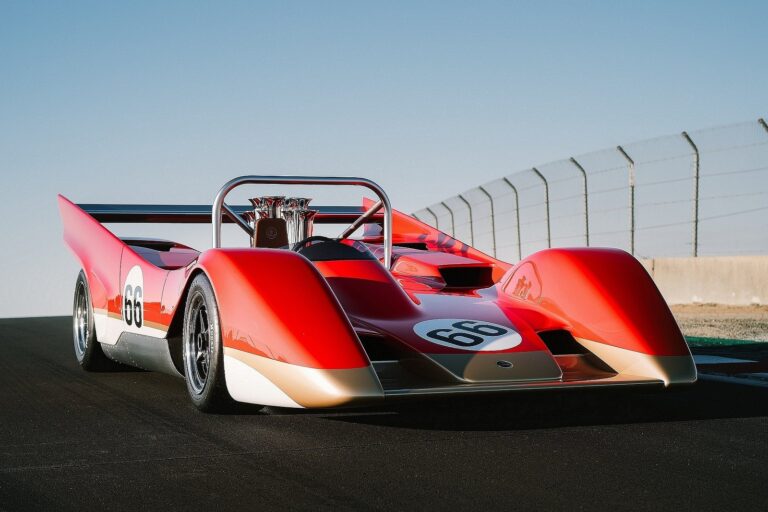Simon Lane, executive director at Lotus Advanced Performance, said that the Type 66 “takes drivers back in time,” and we can’t argue with that statement based on the car’s blast-from-the-past appearance. The colors of the Lotus Type 66 include white, red, and gold graphics that are period-correct, and the overall design is very similar to the car that might’ve been produced over 50 years ago.
Scale drawings from Clive Chapman (son of Lotus founder Colin Chapman, who spearheaded the original Type 66 project) were digitized to bring the new car to life. True to Colin Chapman’s early designs, the car looks as if its only goal is to cut through the air as efficiently as possible.
It has a low frontal area that forms part of a full carbon fiber bodyshell. The front wing directs air from the front, through the car, and under the rear wing. This concept of air traveling through a car and not merely around it is a Lotus signature element and can also be seen on the Emira, Eletre, and Evija. On the 2024 Type 66, the aerodynamic body generates greater downforce than the car’s weight at full speed. In fact, 1,000 hours of Computational Fluid Dynamics (CFD) work went into the modern Type 66, with over 1,760 pounds of downforce at 150 mph. A fixed rollover bar is also installed.
One of the Lotus Type 66 exterior’s most striking features is the air intake ‘trumpets’ above the engine, inspired by Can-Am. These smooth out the air intake, allowing for laminar flow, and contributing to smoother power delivery. Dual exhaust outlets are situated at the back.


